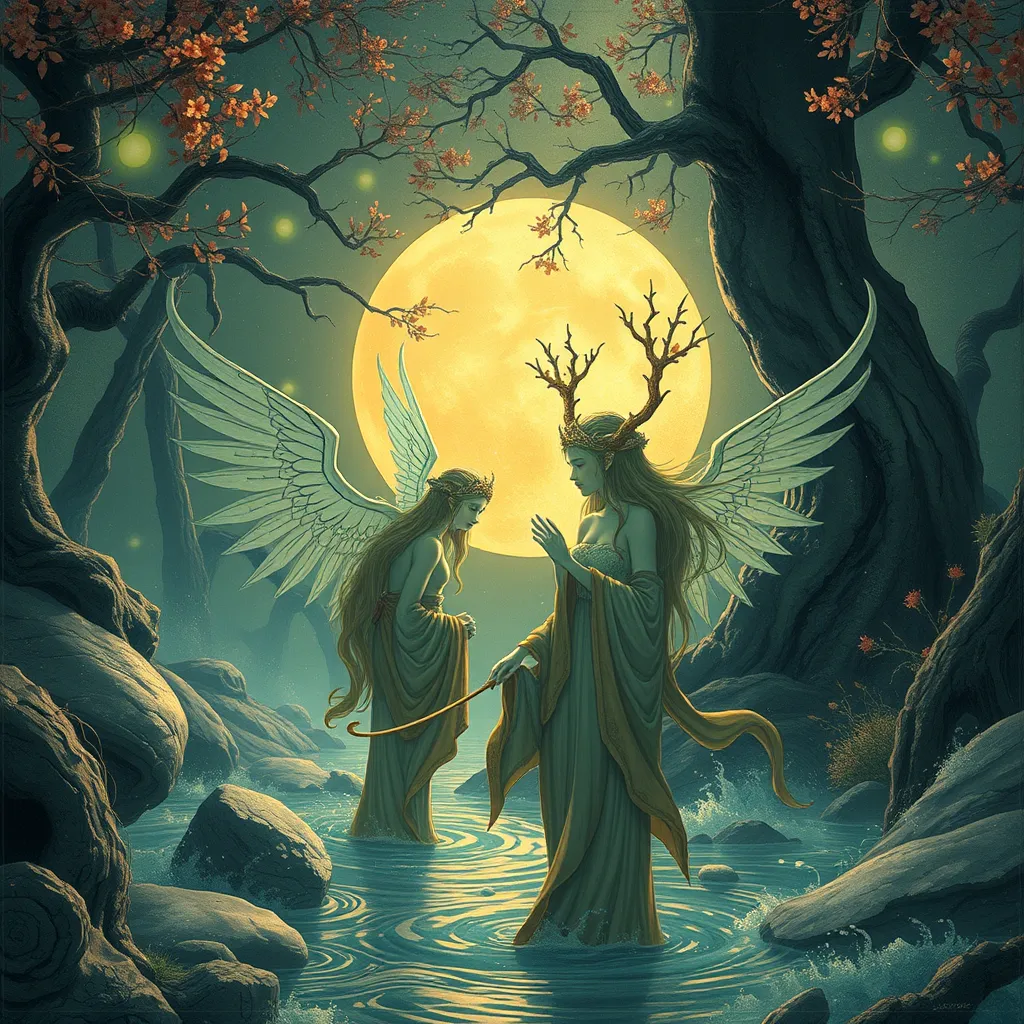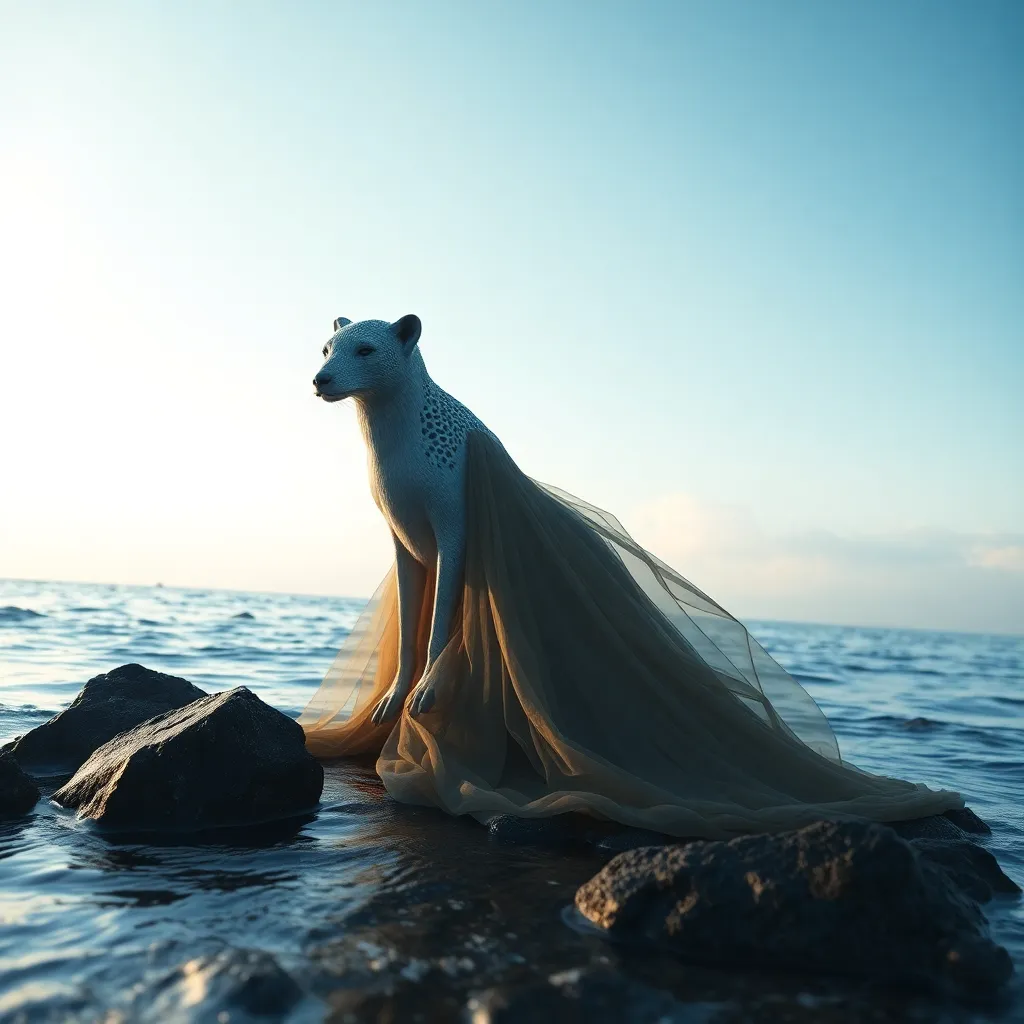The Nymphs of Japanese Mythology: Exploring the Yama-waro and the Kawataru
I. Introduction
Nymphs in Japanese mythology, often referred to as spirits or deities associated with natural elements, play a crucial role in the cultural and spiritual landscape of Japan. These entities embody the essence of the environments they inhabit, bridging the gap between the natural and the supernatural.
Among the myriad of these spirits, the Yama-waro and the Kawataru stand out as significant figures. The Yama-waro are mountain guardians, while the Kawataru are spirits of waterways. Both embody the duality of nature, representing the interplay between land and water, and their stories reflect the rich tapestry of Japanese folklore.
Understanding these nymphs is essential not only for appreciating Japan’s mythological heritage but also for recognizing their influence on cultural practices and environmental stewardship.
II. The Yama-waro: Guardians of the Mountains
The Yama-waro are often depicted as small, humanoid figures, resembling children or small adults, with distinctive features such as long hair and rugged clothing made from natural materials. Their appearance reflects their close connection to the mountain landscapes they protect.
In folklore, Yama-waro are seen as guardians of the mountains, ensuring the balance of the ecosystem. They are believed to have the ability to control the weather, summon mountain wildlife, and guide lost travelers safely through treacherous terrain.
- Role in Mountain Ecology: The Yama-waro are thought to maintain the health of mountain forests and wildlife. They are associated with specific flora and fauna, and their presence is believed to promote biodiversity.
- Folklore: Numerous stories tell of the Yama-waro helping villagers by providing guidance or protection from natural disasters.
In various mountain communities, rituals and festivals are held to honor the Yama-waro. Offerings of food and drink are left at mountain shrines, and local legends often recount miraculous events attributed to these spirits, emphasizing their importance in the lives of the people who reside near the mountains.
III. The Kawataru: Spirits of the Waterways
The Kawataru, on the other hand, are linked to rivers, lakes, and other bodies of water. Typically depicted as playful and mischievous spirits, they often have features reminiscent of aquatic creatures, such as webbed fingers and scales. Their playful nature sometimes leads them to engage with humans, often causing both good and trouble.
The Kawataru play a vital role in riverine ecosystems, believed to govern the flow of water and the health of aquatic life. Their actions are thought to influence the fertility of the land surrounding waterways.
- Local Folklore: Many stories recount encounters with Kawataru where they assist fishermen or bless crops but can also lead to misfortune if disrespected.
- Cultural Practices: Festivals celebrating the Kawataru often involve water-based activities, such as boat races and offerings thrown into rivers to appease these spirits.
Communities near rivers often engage in rituals to honor the Kawataru, ensuring good fortune and safe passage on their waters. These practices reflect the deep-seated respect for water as a life-giving force in Japanese culture.
IV. Historical Context and Evolution of Nymph Legends
Historical records of the Yama-waro and Kawataru can be traced back to ancient Japanese texts, including the “Nihon Shoki” and “Konjaku Monogatari.” These texts provide insights into how these nymphs were perceived in early Japanese society.
Over the centuries, the stories of these spirits have evolved, adapting to changes in social and environmental contexts. Modern interpretations may present them as symbols of environmental conservation and cultural identity.
When comparing the Yama-waro and Kawataru to nymph-like figures in other cultures, such as the Greek nymphs of forests and rivers, similarities in their roles as guardians of nature emerge, highlighting a universal reverence for the natural world.
V. Symbolism and Significance in Japanese Mythology
The Yama-waro and Kawataru symbolize the duality of nature—mountains representing stability and permanence, while water embodies change and fluidity. Together, they illustrate the interconnectedness of different ecosystems.
- Symbolic Meanings: The Yama-waro are often seen as symbols of protection and resilience, while the Kawataru represent adaptability and the flow of life.
- Influence on Art and Literature: These nymphs have inspired numerous works of art, literature, and modern pop culture, featuring in stories, paintings, and even anime.
Their enduring legacy reflects a broader appreciation for nature and its spirits within Japanese society, serving as a reminder of the importance of living in harmony with the environment.
VI. Regional Variations and Local Beliefs
Across Japan, depictions of Yama-waro and Kawataru can vary significantly. In some regions, they may have distinct names and attributes, reflecting local beliefs and environmental conditions.
- Regional Differences: For instance, in the northern regions, Yama-waro may be associated with snow and ice, while in southern areas, they may embody the lush greenery of the mountains.
- Unique Myths: Local legends often add layers to the Yama-waro and Kawataru narratives, with stories that are unique to specific communities.
These regional customs shape the perception of these spirits, influencing how they are honored and integrated into local cultural practices.
VII. Contemporary Relevance and Cultural Preservation
In modern Japanese society, the Yama-waro and Kawataru continue to hold relevance. They are symbols of environmentalism and cultural heritage, reminding people of the importance of nature.
Efforts to preserve these myths include educational programs, cultural festivals, and artistic representations that celebrate their stories and significance.
Tourism also plays a role in promoting awareness of these spirits, with many visitors drawn to sacred mountains and rivers where the Yama-waro and Kawataru are honored.
VIII. Conclusion
In conclusion, the Yama-waro and Kawataru are vital figures in Japanese mythology, representing the intricate relationship between humanity and nature. Their stories and rituals highlight the cultural significance of environmental stewardship and the reverence for the natural world.
As we continue to explore the rich tapestry of Japanese mythological figures, the tales of the Yama-waro and Kawataru serve as a reminder of the enduring connection between people and the spirits of nature, inviting further exploration and appreciation.



